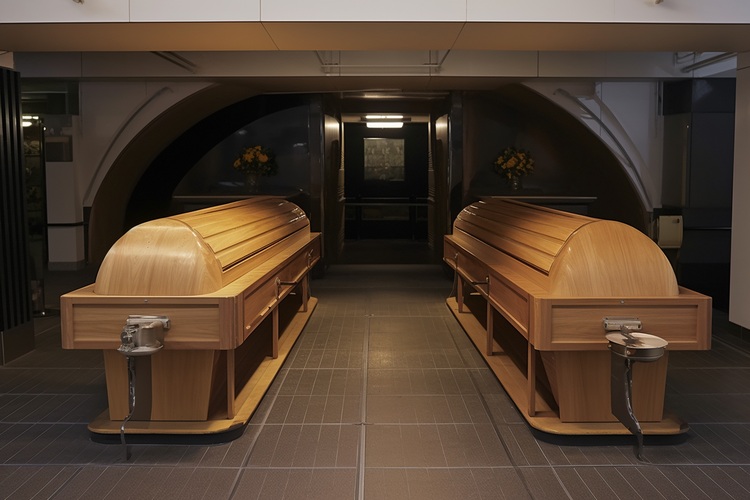Understanding the Cost of Cremation - A Complete Guide
Cremation has become an increasingly popular choice for end-of-life arrangements. As families consider this option, understanding the associated costs is crucial for making informed decisions during a sensitive time. This comprehensive guide will explore the various factors that influence cremation expenses and provide insights into different cremation options available.

What is the average cost of cremation?
The cost of cremation can vary significantly depending on several factors, including location, services chosen, and the provider. On average, a direct cremation (the most basic option) can range from $1,000 to $3,000 in the United States. However, more comprehensive cremation packages that include additional services such as a viewing or memorial service can cost between $2,500 and $6,000 or more[1].
It’s important to note that these figures are general estimates, and actual costs may differ based on your specific location and requirements. Some urban areas tend to have higher cremation costs compared to rural regions due to operational expenses and demand.
What factors affect the cost of cremation?
Several key factors influence the overall cost of cremation:
-
Type of cremation service: Direct cremation is typically the least expensive option, while full-service cremation with a viewing and ceremony will cost more.
-
Geographic location: Prices can vary significantly between states and even cities within the same state.
-
Crematory fees: The actual cost of the cremation process itself.
-
Casket or container selection: The type of container used for the cremation can affect the price.
-
Urn choice: The cost of the urn to hold the ashes can vary widely based on material and design.
-
Additional services: Things like embalming, viewing, memorial services, or transportation can add to the total cost.
-
Death certificates: The number of official death certificates requested will impact the overall expense.
Understanding these factors can help families make more informed decisions when planning for cremation services.
What are the different types of cremation options available?
Cremation services generally fall into three main categories:
-
Direct cremation: This is the most basic and affordable option. The body is cremated shortly after death without a viewing or ceremony.
-
Cremation with a memorial service: The body is cremated first, and then a memorial service is held with the ashes present.
-
Full-service cremation: This includes a viewing or wake with the body present, followed by a funeral service and then cremation.
Each option offers different levels of service and personalization, allowing families to choose based on their preferences and budget.
How can you save money on cremation costs?
While cremation is often less expensive than traditional burial, there are still ways to manage costs:
-
Compare prices: Shop around and get quotes from multiple providers in your area.
-
Choose direct cremation: This is typically the most cost-effective option.
-
Provide your own urn: Purchasing an urn separately can be cheaper than buying from the funeral home.
-
Limit additional services: Opt for fewer or no additional services like viewing or embalming.
-
Consider donation: Some medical schools or research facilities may cover cremation costs in exchange for body donation.
-
Plan ahead: Pre-planning and pre-paying for cremation can sometimes lock in lower rates.
Remember, it’s important to balance cost-saving measures with your family’s emotional needs and desires for memorialization.
What unique considerations should be kept in mind when planning for cremation?
When planning for cremation, consider these unique aspects:
-
Religious and cultural beliefs: Ensure the chosen cremation process aligns with your faith or cultural practices.
-
Environmental impact: Some crematories offer “green” cremation options that are more environmentally friendly.
-
Ash scattering regulations: If you plan to scatter ashes, be aware of local laws and regulations.
-
Keepsakes and jewelry: Consider options for incorporating small amounts of ashes into memorial jewelry or keepsakes.
-
Timing: Understand the timeline for receiving ashes after the cremation process.
These considerations can help ensure that the cremation process meets your family’s specific needs and expectations.
How do cremation costs compare to traditional burial expenses?
Cremation generally costs less than traditional burial, but it’s important to understand the price differences:
| Service Type | Average Cost Range | Key Factors Affecting Cost |
|---|---|---|
| Direct Cremation | $1,000 - $3,000 | Location, provider, basic services |
| Full-Service Cremation | $2,500 - $6,000+ | Additional services, urn selection |
| Traditional Burial | $7,000 - $12,000+ | Casket, plot, headstone, services |
Prices, rates, or cost estimates mentioned in this article are based on the latest available information but may change over time. Independent research is advised before making financial decisions.
The significant cost difference between cremation and traditional burial is primarily due to expenses associated with caskets, burial plots, and more extensive funeral services typically included in traditional burials. However, it’s crucial to remember that cremation costs can increase substantially if additional services or premium options are chosen.
In conclusion, understanding the cost of cremation involves considering various factors, from the type of service to location and additional options. By exploring different cremation options and being aware of potential expenses, families can make informed decisions that honor their loved ones while respecting their financial situations. Remember to compare prices from multiple providers and consider pre-planning to potentially secure better rates. Ultimately, the choice between cremation and traditional burial should balance personal preferences, cultural beliefs, and financial considerations.
Sources:
- National Funeral Directors Association (NFDA) - 2021 General Price List Survey




